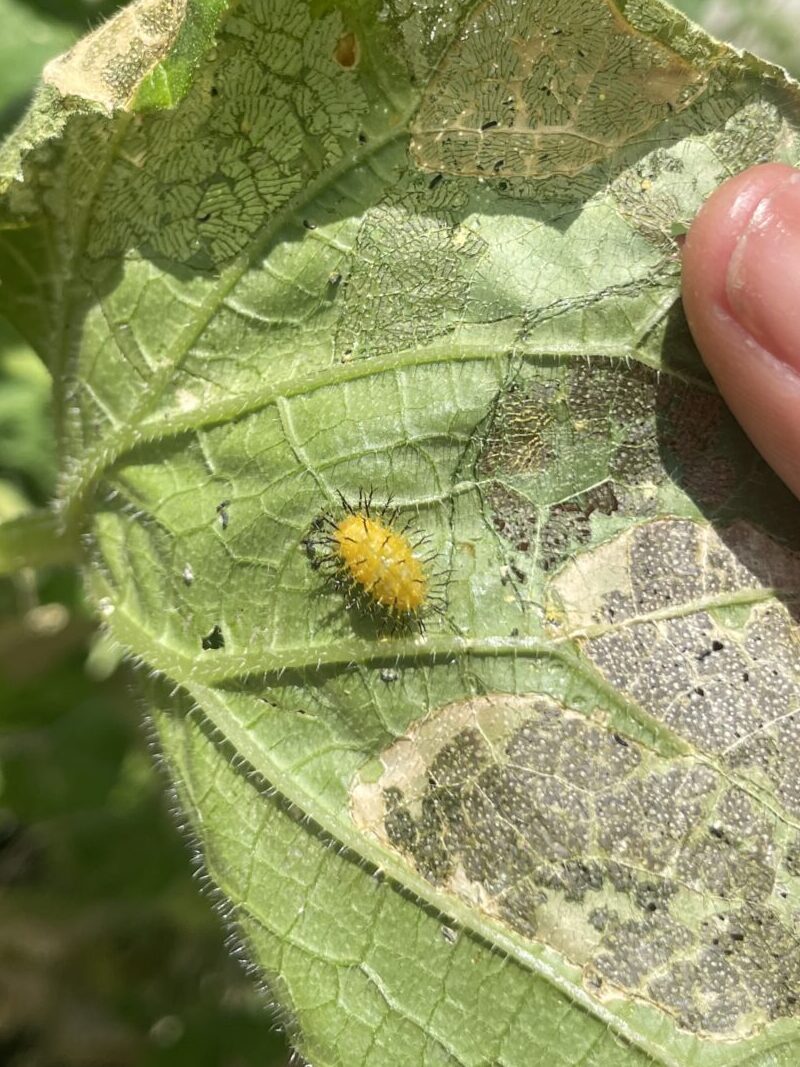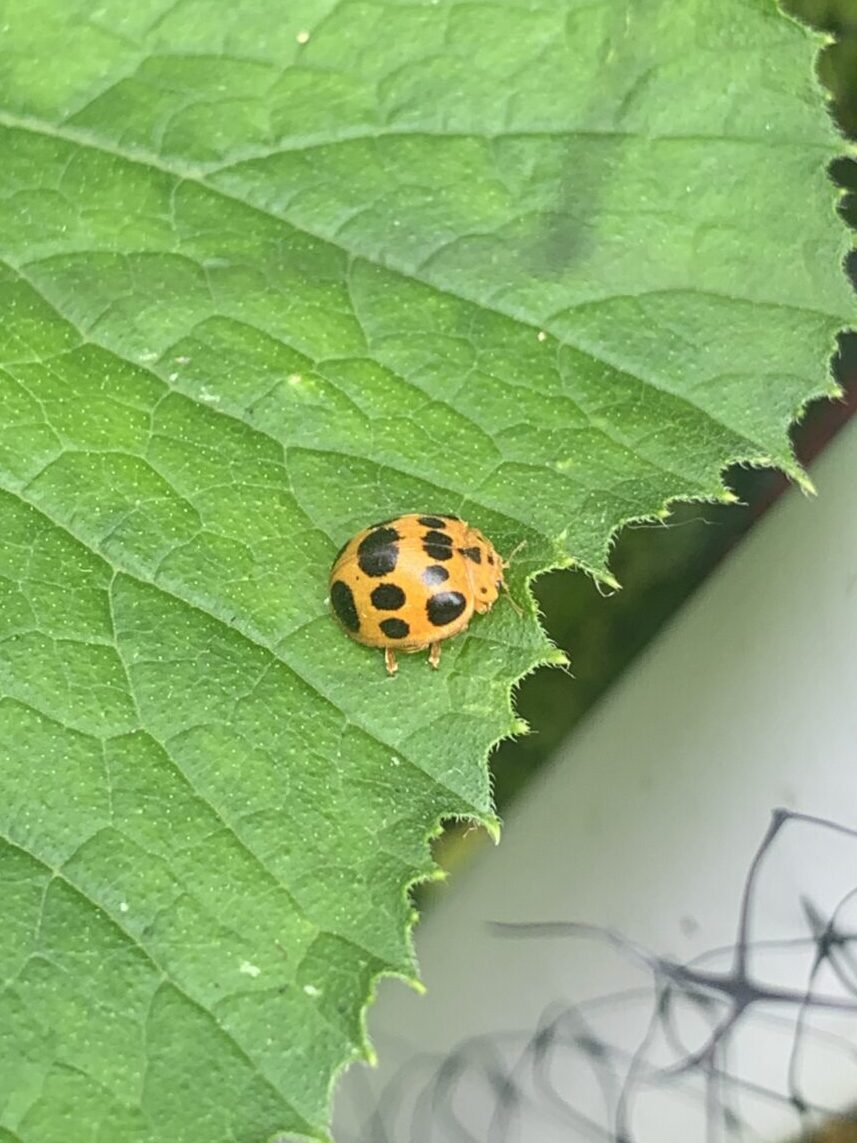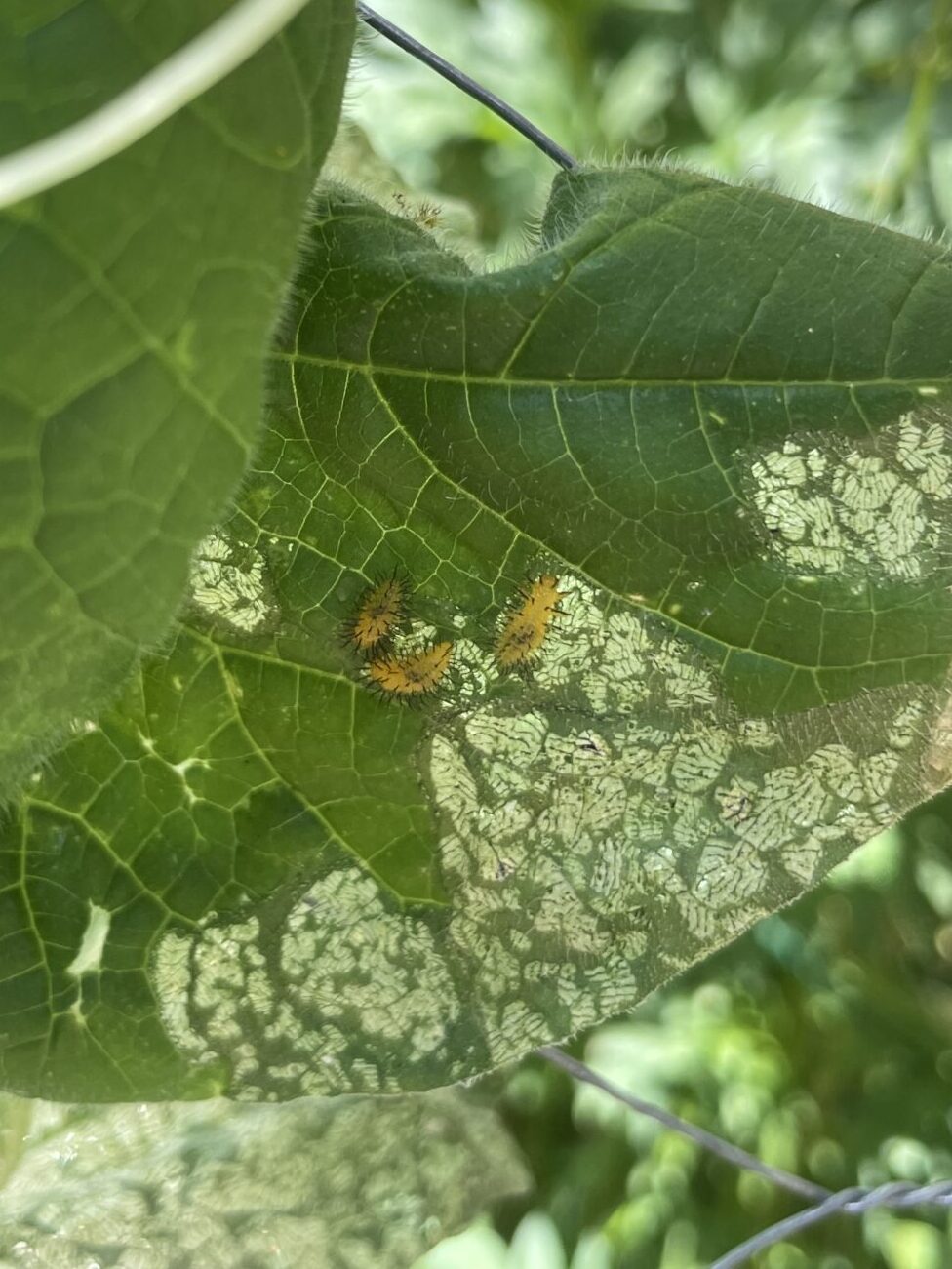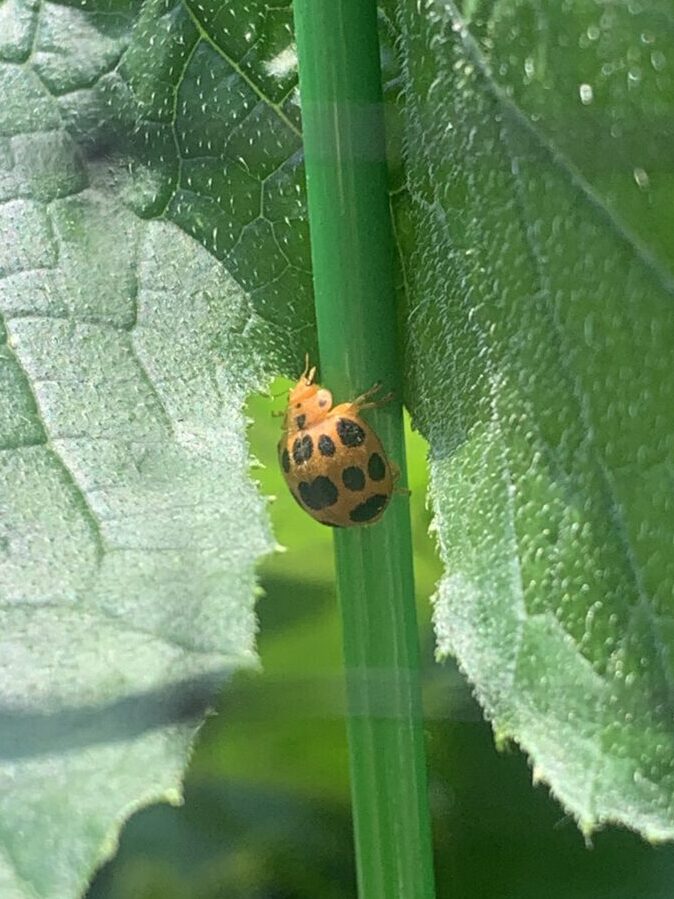Squash, zucchini, and cucumber are some of the most popular vegetable crops for Georgia home gardeners. Once their big leaves start sprawling and their showy flowers bloom, you know summer has officially arrived.
While cucurbit crops are fairly easy to start from seed in the home garden, they are attractive to a variety of insect pests and disease-causing pathogens. They’re not especially difficult crops to grow, but they face so much pressure from pests that I personally consider them to be some of the most challenging crops in Georgia.
I hear a lot of complaints about squash bugs (Anasa tristis) and squash vine borer (Melittia cucurbitae), but there’s another major pest I see every year on squash plants across the county: squash beetle.


How to Recognize Squash Beetles
Squash beetles (Epilachna borealis) are actually an herbivorous species of lady beetle, also called a ladybug. While most lady beetles are predators, feeding on small insects like aphids, squash bug larvae and adults feed on the leaves of cucurbit plants, including squash, zucchini, cucumber, and pumpkin.
Like all lady beetles, squash beetle adults have domed, rounded backs and flat undersides, resembling tiny tortoises. They have 14 black spots on their wing coverings, roughly arranged in three horizontal rows, with four smaller spots on the thorax just behind the head. The head, thorax, and wing coverings are all orange or copper-colored.
Squash beetles are related to Mexican bean beetles (Epilachna varivestis), which look similar but are slightly smaller. Mexican bean beetles prefer to feed on legumes, including crops like green bean, lima bean, soybean, and cowpea, as well as non-crop plants like clover and common beggarweed.
Both squash beetle adults and larvae are chewing pests, leaving cucurbit leaves looking skeletonized and lace-like, especially around the edges. This type of damage is sometimes called “windowpaning”. Adults may also feed on the skins of squash fruit once they become available.

Squash beetles are not to be confused with squash bugs, which are “true bugs” in the order Hemiptera. Squash bugs and squash beetles have very different body shapes, life cycles, and methods of feeding.
Managing Squash Beetles
In most cases, squash beetles are not going to wipe out your whole squash crop, the way squash bugs and squash vine borers can. However, once leaves get heavily skeletonized they can’t photosynthesize as well, and those plants won’t yield as much squash fruit. Also, all that leaf damage can stress your plants, making them more susceptible to diseases and colonization from other insect pests.
The bottom line is you won’t get as much fruit from a plant that’s being fed on by squash beetles, and you may have to pull it out prematurely.
The best course of action is prevention. Peek at leaf undersides early and often, looking for squash beetle eggs. If you see them, squash them! You can wear gloves or fold the leaf over if squashing insect eggs barehanded isn’t your thing. Eliminating eggs as soon as you see them will go a long way towards curbing the population.
In areas that get infested every year, install floating row covers over squash at planting, and leave them on until squash plants begin flowering. This will protect plants from early infestations that can begin to stress plants and turn into bigger infestations later in the season.


Continue monitoring throughout the growing late spring and summer, looking out for those lacy leaf edges and squashing larvae and adults as you see them. You can also pluck them off and toss them into a cup with some soapy water. The soap breaks the surface tension of the water, so they can’t escape by standing on the surface.
Get in touch with your county Extension office for up-to-date insecticide recommendations.